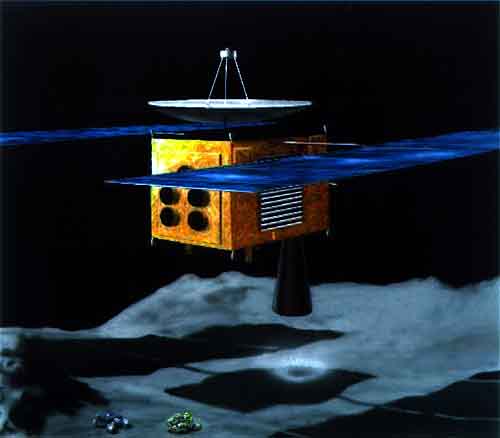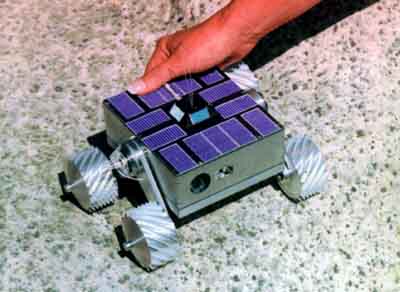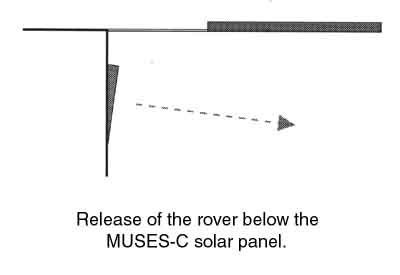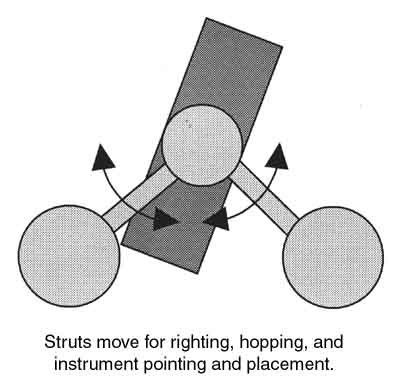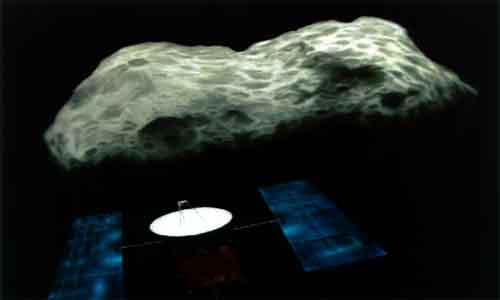The NASA Rover for MUSES-C
Stephen F. Peters
Jet Propulsion Laboratory,
California Institute of Technology
Introduction
The ISAS MUSES-C spacecraft, to be launched in 2002, will execute the first asteroid sample return mission. It is also planned that the spacecraft will carry a NASA-built rover to the asteroid.
International Cooperation
ISAS and NASA are planning to cooperate on the mission in several areas.NASA is providing a rover capable of in-situ scientific observations of the asteroid, Deep Space Network tracking, navigation support, testing of the ISAS return capsule heat shield at NASA's Ames Research Center, reentry targetting, and retrieval of the sample return capsule in the US.
ISAS is providing transportation of the NASA rover to the asteroid and command and telemetry communications through the MUSES-C spacecraft and ground system to the JPL Rover Control Workstation on site at ISAS. ISAS also will transfer a portion of the returned asteroid sample to NASA.
Both sides are providing science investigators for the MUSES-C and NASA rover instruments and for analysis of the returned sample.
